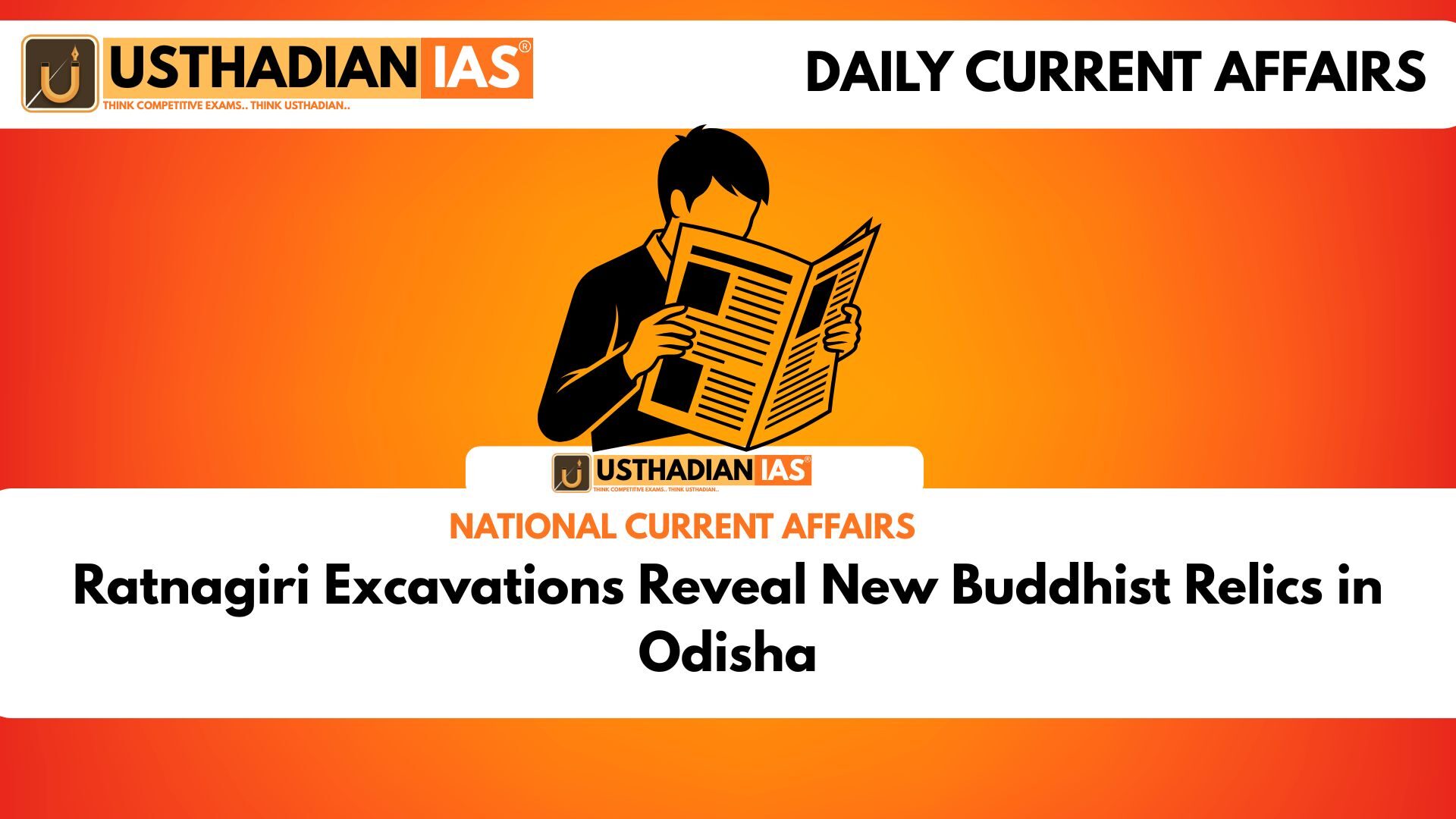Rediscovery at the Hills of Jewels
Ratnagiri Excavations Reveal New Buddhist Relics in Odisha: The Archaeological Survey of India (ASI) has made remarkable discoveries at the ancient Buddhist site of Ratnagiri in Jajpur district, Odisha. During its latest round of excavations, the ASI unearthed several significant relics, including a colossal Buddha head, a palm sculpture, and Buddhist inscriptions. These finds date back to the 8th and 9th centuries, reaffirming Ratnagiri’s historical and spiritual importance within India’s Buddhist legacy.
Historical Significance of Ratnagiri
Located 100 km northeast of Bhubaneswar, the Ratnagiri site is perched between the Birupa and Brahmani rivers, making it a central part of Odisha’s famed Diamond Triangle, along with Lalitgiri and Udaygiri. Scholars trace Ratnagiri’s origins to the 5th century, with its architectural zenith between the 7th and 10th centuries. The site was a major centre for Mahayana and Tantrayana Buddhism, which flourished during the Bhaumakara dynasty’s rule in the 8th–10th centuries. Some historians suggest that Chinese pilgrim Hiuen Tsang may have passed through this region during his Indian travels in 638–639 AD.
Buddhist Flourishing in Odisha
Buddhism in Odisha gained prominence especially after Ashoka’s Kalinga War in 261 BCE, after which he embraced the faith. Over centuries, Odisha became a hub for Buddhist learning and practice. Under the patronage of local dynasties, especially the Bhaumakaras, several monasteries (viharas) and stupas were constructed, attracting monks and scholars from far and wide. Ratnagiri emerged as a premier centre of Tantric Buddhism, housing elaborate sculptures and rituals associated with Vajrayana traditions.
Maritime Connections with Southeast Asia
Ancient Odisha’s Buddhist legacy wasn’t confined to land. The region’s strategic coastal location enabled thriving maritime trade with Southeast Asian kingdoms like Java, Sumatra, Borneo, Burma, and Sri Lanka. Goods such as silk, camphor, gold, and pepper were exported from the Kalinga coast, strengthening cultural and religious ties. This legacy is remembered through the annual Baliyatra festival, a seven-day celebration of Odisha’s ancient seafaring links with Bali and the broader Asian maritime world.
Cultural Impact of the Discoveries
The renewed excavations at Ratnagiri not only enrich the understanding of Odisha’s Buddhist past but also underscore India’s broader links with Asian spirituality and heritage. The site’s importance lies in its blend of art, architecture, religion, and global maritime heritage, positioning Ratnagiri as a vital node in both Indian and global Buddhist history.
Static GK Snapshot: Ratnagiri Buddhist Site
| Topic | Details |
| Location | Ratnagiri, Jajpur district, Odisha |
| Time Period | 5th–13th Century CE (peak: 7th–10th century) |
| Major Religion | Mahayana and Tantrayana (Vajrayana) Buddhism |
| River Nearby | Between Birupa and Brahmani rivers |
| Known As | “Hills of Jewels” |
| Related Sites | Diamond Triangle: Lalitgiri, Udaygiri, Ratnagiri |
| Important Dynasty | Bhaumakara Dynasty (8th–10th Century) |
| Notable Visitors | Hiuen Tsang (638–639 AD) |
| Festival | Baliyatra – Celebrates maritime trade with Bali |
| Recent Findings | Buddha head, palm sculpture, Buddhist inscriptions |
| Excavating Agency | Archaeological Survey of India (ASI) |








